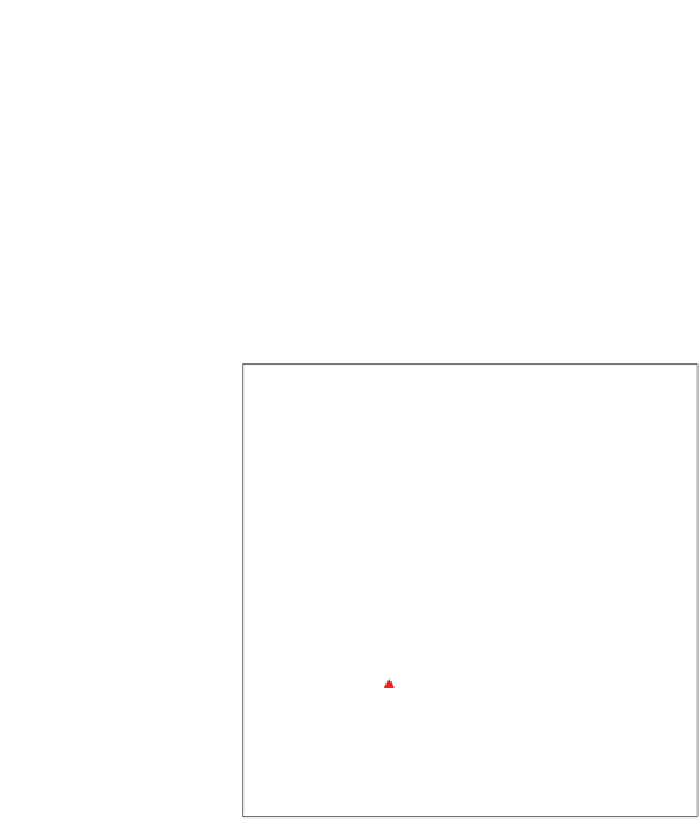Information Technology Reference
In-Depth Information
time we have shifted axes (see Chapter 2) to a more convenient position that interferes
less with the plotted information.
The main effects for the varieties can be added to the biplot in Figure 6.7 by calling
the function
biadbipl
with the argument
add.maineffects = TRUE
. This has been
done in Figure 6.8.
The function
biadbipl
allows simultaneously all the interaction predictions for any
given site to be obtained. This is achieved by using circle projection as described in
Chapter 2 to draw a circle with diameter the line connecting the site with the ori-
gin. Predictions are given where the circle intersects the biplot axes. This is shown
in Figure 6.9 for site
Fow.L
by calling
biadbipl
with arguments
X = wheat.data,
Hun(62)
50
−
150
Box.H
0
Cap(72)
50
50
−
50
−
100
0
Box.L
Tru.H
−
50
T64(30)
0
0
0
Tru.L
Ear.L
−
50
0
0
Ear.H
−
50
0
Fow.H
50
Hob(78)
100
Cra.L
Beg.L
20
50
0
Edn.H
0
50
−
100
0
Cra.H
−
50
0
Edn.L
−
50
−
100
Beg.H
50
−
150
Fow.L
Spo(44)
100
100
T95(8)
Kin(75)
100
−
100
50
(a)
Figure 6.8
Similar to the biplot in the bottom panel of Figure 6.6 but with varieties
main effects added by calling function
biadbipl
with argument
add.maineffects =
TRUE
. Note that the scales on the biplot axes have changed to reflect the role of the
main effects. The main effects can also be shown on the biplot axes. This can be
implemented by setting argument
show.maineffects = TRUE
when calling
biad-
bipl
. All main effects are shown as solid black circles on the respective biplot axes.
In (a) of Figure 6.8 these black circles lie on top of one another coinciding with the
origin and is therefore not explicitly visible. However, in the biplot in (b) where the
origin has been translated the black circles indicating the respective main effects are
readily appreciated. Note that plotting the varieties as points has been suppressed by
specifying
plot.col.points = FALSE
and
col.points.text = FALSE
in the call
to
biadbipl
.















